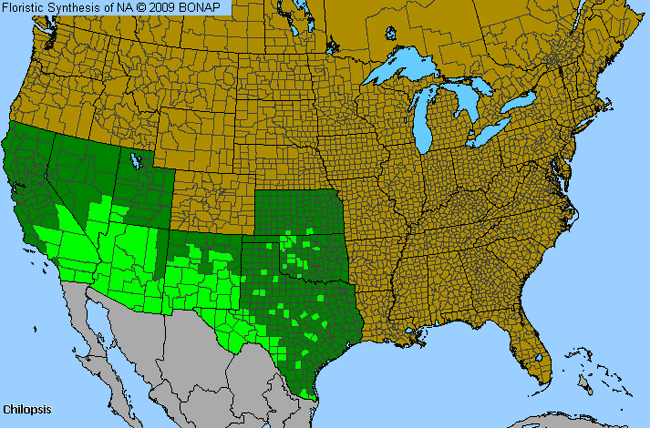Desert-Willow (Chilopsis)

Desert-Willow Genus Details

The desert willow is a large deciduous shrub or small tree that may grow 10 to 30 feet tall. It often has a leaning trunk and an open, spreading crown. The dark brown bark is very thin. Pale green leaves are opposite or alternate. The pink to light violet flowers are 1.25 inches long and wide and occur in clusters up to 4 inches long at the end of the twigs.The desert willow is native to southwest New Mexico and northern Mexico but is found in many southwestern states. It is usually found along desert washes, creeks, stream banks and drainages. It is also used in residential landscapes, parks and highways. Since the desert willow requires low maintenance and is drought tolerant, it's one of the most widely used native plants in the southwest. In earlier times, the thin branches were used as bows by Native Americans.
Desert-Willow Allergy Info

This genus is not typically considered to be of marked allergenic significance to most people.
Desert-Willow Pollen Description

Pollen grains in this family are united in tetrads. The tetrads are inaperturate and the sexine is reticulate.
The tetrads are large, from 45-56 micrometers in diameter.
Species in This Genus

Allergenicity Legend:
 Mild Allergen |
Mild Allergen |
 Moderate Allergen |
Moderate Allergen |
 Severe Allergen |
Severe Allergen |
 Allergy Test Available
Allergy Test Available
Desert-Willow (Chilopsis) is a genus of the BIGNONIACEAE family.
This genus includes the following allergenic species:
This genus includes the following allergenic species:











